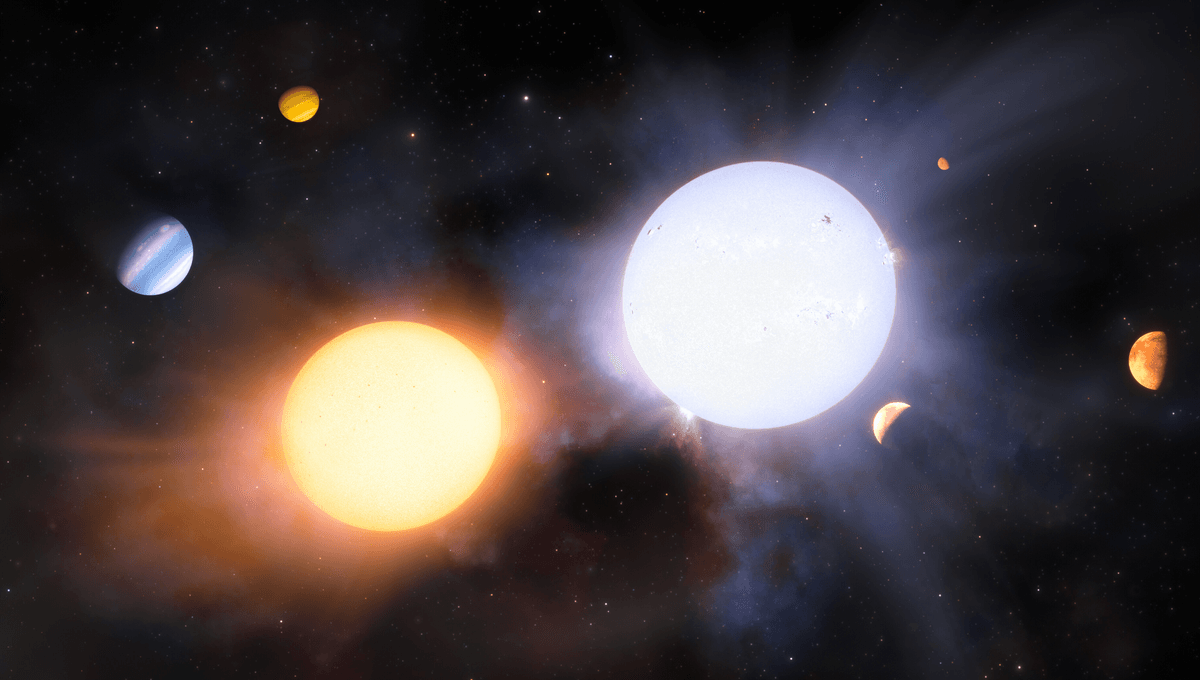
Television dramas often thrive on families where siblings have personalities much more different from each other than people would assume. The same may be true for stars, at least giant ones, and the results could make scientific research on many aspects of astronomy more convoluted than the plot of a long-running series.
Occasionally a star may pass close enough to another to be captured and remain in orbit, but this is very rare. Almost all stars in binary systems, particularly close binaries, are thought to have formed together from the same gas cloud, and therefore started with the same chemical composition. This assumption is used to explore many aspects of stellar evolution. In the last few weeks, for example, it’s apparently helped explain an unusually massive stellar black hole and estimate how many stars swallow their planets.
Unfortunately, new research suggests it might be wrong.
Carlos Saffe of Argentina’s Institute of Astronomical, Earth and Space Sciences led a team that used the Gemini South telescopes to collect spectra from the pair of giant stars known as HD 138202 + CD−30 12303 (until astronomers come up with something catchier). They found the larger star had significantly more iron – frequently used as a proxy for metals in general – than its smaller sibling.
For older stars, there are easy explanations for this. As a star develops, it becomes more stratified, with elements settling to internal layers so that their spectrum can’t be detected. This can occur at different rates for binary companions, making them appear more different than they are. Stars can also consume nearby planets, whose metal content changes the ratio near the surface, which might happen in one star but not the other.
However, when both stars in a binary are sufficiently massive, these explanations break down. Such stars are very well mixed, and planetary material has only a minor effect on composition near the surface. So it was a surprise to observe such differences in giant stars too well-mixed for either explanation to make sense. Instead, the two stars must have had differing compositions all the way through.
“This is the first time astronomers have been able to confirm that differences between binary stars begin at the earliest stages of their formation,” Saffe said in a statement.
It’s always dangerous to draw conclusions from a single example, and perhaps HD 138202 + CD−30 12303 will turn out to be quite atypical for reasons as yet unknown. Notably, the two stars are quite far apart – more than half a light year, or a thousand times the distance from the Sun to Neptune. However, if the pattern is common, there are plenty of implications for astronomy.
For one thing, we won’t be able to assume the starting ingredients of a star by looking at its companion. In the example referenced above, we can’t be so sure the black hole is from a star almost entirely made of primordial elements, even though its companion is.
We’d also need to determine if star-forming clouds can be that different at nearby locations, or if something can sometimes interfere with the incorporation of metals into one star but not both.
Gas clouds give birth not just to pairs of stars, but clusters of thousands, which gradually drift apart. Recent efforts to identify stars that come from the same cloud have looked for those on similar paths around the galaxy, but also matched ages and compositions. Perhaps the last is not as good an indicator as we thought.
We might also need to rethink ideas of planetary formation. “Different planetary systems could mean very different planets – rocky, Earth-like, ice giants, gas giants – that orbit their host stars at different distances and where the potential to support life might be very different,” said Saffe. That could make for great science fiction – imagine two very different planetary systems orbiting stars so close to each other that travel between them is practical – but current assumptions about where to look for life may need revision.
Much as this work may make things harder for his colleagues, Saffe is excited. “By showing for the first time that primordial differences really are present and responsible for differences between twin stars, we show that star and planet formation could be more complex than initially thought,” he said. “The Universe loves diversity!”
The study is published open access in the journal Astronomy and Astrophysics.
Source Link: Giant Sibling Stars Are Not As Similar As We Thought